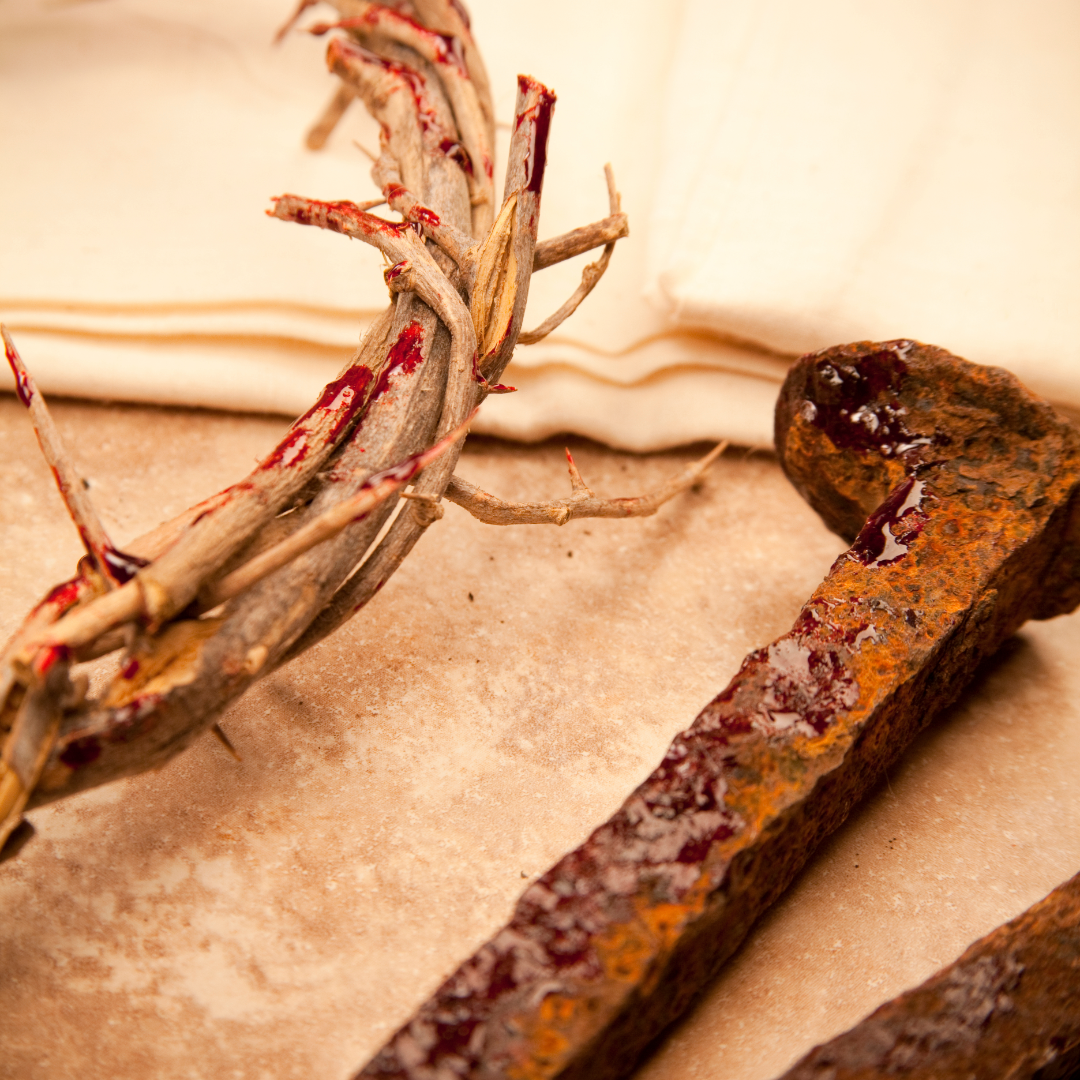
Hillary Ibarra offers a meditation on how the Sorrowful Mysteries of the Rosary invite us to give thanks daily.
The Sorrowful Mysteries of the Rosary—centered on Christ's passion and death—are so sorrowful that some may be discouraged from praying them. When I asked my children to pray them with me once when they were younger, my daughter sighed, "They're so sad."
Yes, but they invite us to give thanks daily. Here are a few realizations I've had while praying these mysteries:
The Agony in the Garden
Many people battle bipolar disorder, depression, panic attacks, or obsessive-compulsive disorder, and all of us know what it is like to go through periods of mental agony caused by uncontrollable circumstances in our lives.
Christ did not suffer from mental illness and all circumstances were in God's control, but our Savior experienced such mental, emotional, and spiritual agony in the garden while facing His arrest, torture, and Crucifixion that He sweated blood.
In the darkness and loneliness of our own very personal and sometimes dire circumstances and mental struggles, we can be sure He truly knows what we are experiencing and never abandons us.
He also invites us to seek the company and support of others, just as He sought the support and company of His disciples in prayer that night in Gethsemane. Reaching out to others is necessary and good, for even our Lord sought the support of His friends to watch and pray.
The Scourging at the Pillar
Every stripe that Christ bore at the pillar bled with the love and mercy of God.
After sin and death entered our world, God did not ignore our suffering. He does not ignore it now. Christ entered our suffering and redeemed it. Suffering is not meaningless. With the courage of Christ—something we can pray for—we can forebear in our own suffering and offer it up; we can bravely face and enter the sufferings of others to give comfort and hope; and we can choose to suffer for others’ sake as Christ did.
The Crowning with Thorns
What strikes me most strongly when I contemplate the crown of thorns worn by Christ and woven by others is that He bore it in silence.
Too often we feel the urge to defend ourselves verbally, to validate ourselves and our view, to cut others down to raise ourselves up, or to shout our disapproval and disagreement, and by so doing we cause division in our families or increase tension with others. Our words so often accomplish nothing because they are self-serving.
After thrusting the thorny crown on His head, the soldiers mocked Jesus in outrageous fashion when He suffered horribly after the scourging. They struck Him. They spit on Him. They heaped humiliation on Him.
And Jesus was silent. He did not rebuke, challenge, chastise, threaten, or cast judgement.
Can we hold our tongues under our own crown of thorns? Can we, as a spiritual work of mercy, bear wrongs patiently in imitation of Christ?

The Carrying of the Cross
The Passion of the Christ got it right, I believe. Jesus hugged and clung to His Cross by which He accomplished God’s will, stretching out His arms upon it at Calvary despite the raw stripes on His back.
I confess I have not had that attitude toward one of my own crosses: scrupulosity. It has hounded me since childhood, long before I converted to Catholicism after my marriage. In these many years I have railed against it, wishing God would take away my perpetual “thorn in the flesh,” and have sought comfort in Scripture and the experience of scrupulous saints. I have experienced a rocky relationship with Confession because of it—and yet have often been grateful for the reprieve offered by Reconciliation. I have offered up the agony I experience and in the same moment questioned its worth. I chaff under this cross. I do not know how to embrace it yet.
But following Christ is not a stroll in perfect weather along a friendly garden path with no baggage. It involves a narrow and difficult way and weighty crosses. Will I give up under this cross? Or will I ask for Christ’s perfect help in bearing it? It is comforting to recall that a human being named Simon helped Christ bear His.
The Crucifixion
My old parish priest asserted that if ancient Romans were to view all the crucifixes in Catholic churches today, they would be astonished and appalled by our passionate embrace of it, for the Cross was designed to and did represent everything we most fear: humiliation, exposure, torture, suffering, death.
How did such a prolific instrument of ancient torture become the most powerful, enduring symbol of hope?
Because this perfect means of torture and humiliation that early Christians hesitated to embrace was the perfect means of redemption. It challenges and demands change from those who gaze upon it earnestly, and it inspires gratitude in those who believe in the One Who paid the price for our sins.
The Cross is all about thanksgiving. We are guilty, yes, but Someone bore the stripes, wore the crown of thorns, carried the Cross, received the nails in His Flesh, and hung on a tree to regain a life of grace for us. He transformed a symbol and instrument of shame and suffering into the instrument and symbol of salvation. Only God Himself can do such a thing. Accepting that tremendous Gift, we shoulder our own cross and follow Him, continually giving thanks for His mercy and love.

Copyright 2022 Hillary Ibarra
Images: Canva
About the Author

Hillary Ibarra
Hillary Ibarra is a happy wife and mother of four. She is the author of The Christmas List, based on the miracle of one childhood Christmas Eve, and is a freelance humor writer and copywriter. Jesus, her family, playing guitar, admiring trees, and baking bring her joy.


.png?width=1806&height=731&name=CatholicMom_hcfm_logo1_pos_871c_2728c%20(002).png)
Comments